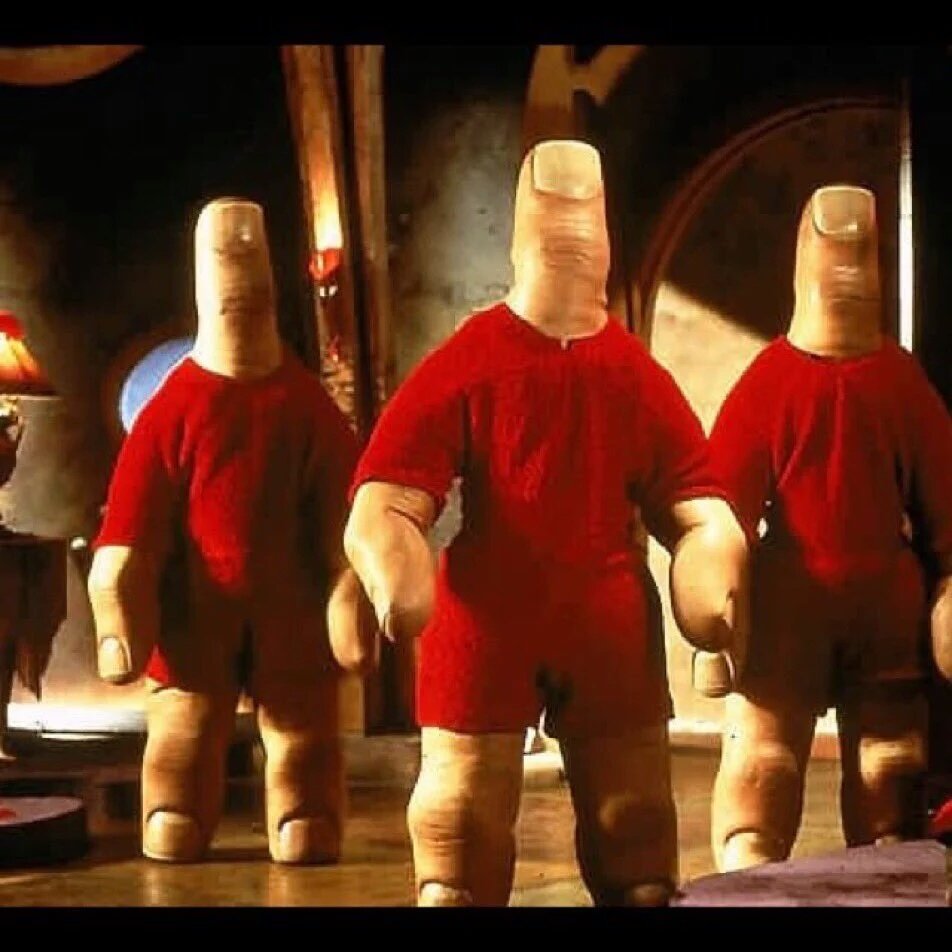Spy Kids' Thumb Thumbs: Origins, Memes, & Legacy!
Ever wondered about the most unforgettable henchmen in cinematic history? The Thumb Thumbs from the Spy Kids franchise, with their quirky design and slapstick antics, have indelibly etched themselves into pop culture, proving that even the most unusual concepts can capture the hearts and imaginations of audiences worldwide.
Introduced to audiences in the 2001 film Spy Kids, the Thumb Thumbs quickly became a symbol of the series' whimsical charm. These robot henchmen, under the employ of the eccentric villain Floop, are defined by their comically oversized thumbs, which serve as both their heads and limbs. Their clumsy nature, a direct consequence of their all-thumb design, provides a continuous stream of comedic relief throughout their appearances.
The premise of Spy Kids, created by the visionary Robert Rodriguez, revolves around the Cortez family, seemingly ordinary parents who are, in reality, highly skilled spies. Their children, Carmen and Juni, discover the truth after their parents are kidnapped, thrusting them into a world of espionage and adventure. The film is a blend of action, comedy, and family values, making it a beloved franchise for viewers of all ages. The Thumb Thumbs, with their outlandish appearance and clumsy demeanor, are a perfect embodiment of the film's blend of fantastical elements and humorous moments. Their design, both visually striking and inherently silly, stands out even among the film's other imaginative creations.
The Thumb Thumbs serve multiple purposes within the Spy Kids universe. Primarily, they function as Floop's robot henchmen, carrying out his orders, however clumsily. They are servants, their presence adding to the film's comedic tone. Beyond their function as henchmen, they play a crucial role in injecting humor into the movies. Their slapstick performances and awkward movements are a constant source of amusement, contributing significantly to the lighthearted atmosphere of the series.
The character of Tom Thumb Thumb, serves as a butler for the villain Scorpion, adding another layer of complexity to the thumb thumb concept. While the Thumb Thumbs are often seen in group settings, their individual personalities and interactions with other characters contribute to their distinct appeal. The clumsy robots are a testament to the film's creative vision and the enduring power of visual humor. Their design isn't just a visual gag; it's a key element of the film's identity.
The Spy Kids franchise, born in the early 2000s, has had a lasting impact, demonstrating that even seemingly minor elements of a film can become iconic. Memes, fan art, and cosplay tributes show how audiences have embraced the Thumb Thumbs, turning them into enduring pop culture symbols. From Halloween costumes to internet jokes, the Thumb Thumbs continue to elicit laughter and admiration, demonstrating the franchises continuing relevance.
The film's fantastical elements are readily accepted, however, one particular device remains stubbornly enigmatic. The "Third Brain" features in the film is a crucial piece of technology for the spy kids. The device can access the full skillset of the OSS organization. Its complexities and impact on the plot makes it a memorable addition to the film's narrative. The film's technical ingenuity, with the inclusion of devices like the third brain, adds layers to its appeal.
The influence of the Spy Kids franchise stretches far beyond its filmography, inspiring everything from 3D printable models to retail merchandise, such as tote bags and stickers. These tangible representations of the Thumb Thumbs show how effectively the character has resonated with the audience. The characters' design has clearly made an impact, influencing everything from Halloween costumes to internet jokes.
The appeal of the Thumb Thumbs lies in their unique blend of humor and design. Like the saying, "I am all thumbs," the Thumb Thumbs embody the meaning of this saying, making them clumsier than they are intended to be. Their heads and limbs are entirely comprised of giant thumbs. The design is a key ingredient of the movie's personality. Their clumsiness makes them very funny, making them relatable to the audience.
The director of Spy Kids, Robert Rodriguez, has a proven track record for creating imaginative and visually striking films. The film, released in 2001, was the first installment in the Spy Kids series. The series has provided audiences with an entertaining and imaginative look into the world of espionage. Other notable stars include Antonio Banderas, Carla Gugino, and Alan Cumming. Their performance in the film have made the franchise a cultural phenomenon.
The franchise of Spy Kids has been a favorite for viewers of all ages since its debut in 2001. The Thumb Thumbs stand as a testimony to the franchises ability to blend imagination, humor, and memorable characters. The movie has become a cult classic because of its unique qualities. These characters represent the core of the films humor and appeal. Fans have appreciated them through memes, fan art, and even cosplay, showing how their image has stood the test of time.
The enduring popularity of Spy Kids is a testament to its creative storytelling and unforgettable characters, and the Thumb Thumbs are the emblem of the film's lasting impact. They've secured their place in pop culture history, proving that even the most unexpected design elements can become iconic and beloved by audiences. Dive into the appeal of these unforgettable characters and the enduring legacy they have helped create.
| Characteristic | Details |
|---|---|
| Name | Thumb Thumbs |
| Franchise | Spy Kids |
| First Appearance | Spy Kids (2001) |
| Role | Robot Henchmen/Servants |
| Creator | Robert Rodriguez |
| Distinguishing Features | Giant Thumbs for Limbs and Heads, Clumsy Behavior |
| Cultural Impact | Memes, Fan Art, Cosplay, Halloween Costumes |
If you want to learn more about the Spy Kids franchise, you can visit the IMDb page for the first Spy Kids movie for more in-depth information.


